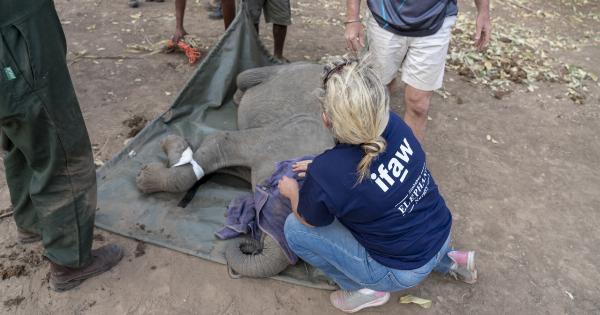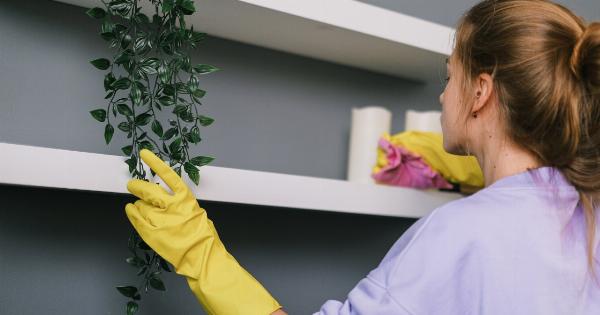When we think of sand and pools, we often associate them with fun and relaxation. However, it is important to be aware that these environments can harbor certain pathogens that can pose a threat to our health.
In this article, we will explore four pathogenic microbes that are typically present in sand and pools.
1. Escherichia coli (E. coli)
E. coli is a bacterium commonly found in the intestines of animals and humans. While most strains of E. coli are harmless, some can cause serious illness. In sand and pools, contamination with fecal matter can introduce E. coli, making it a potential pathogen.
E. coli infection symptoms can range from mild gastrointestinal discomfort to severe abdominal cramps, bloody diarrhea, and vomiting.
Young children, the elderly, and individuals with weakened immune systems are particularly vulnerable to more severe symptoms.
2. Cryptosporidium
Cryptosporidium is a parasite that can survive for long periods in treated swimming pools and sand.
It is transmitted through the fecal-oral route, often through contaminated water.
The symptoms of Cryptosporidium infection, known as cryptosporidiosis, include watery diarrhea, stomach cramps, nausea, and vomiting. In healthy individuals, the infection usually resolves on its own within a few weeks. However, in those with weakened immune systems, such as individuals with HIV/AIDS or undergoing chemotherapy, the infection can be severe and life-threatening.
3. Pseudomonas aeruginosa
Pseudomonas aeruginosa is a bacterium commonly found in soil, water, and sand.
In swimming pools, it can thrive in warm, moist environments such as the pool water or the surrounding sand.
Pseudomonas infection can cause a wide array of symptoms depending on the area of the body affected. It can lead to skin infections, commonly known as “hot tub rash” or “swimmer’s itch,” which present as red, itchy bumps or a rash.
In more severe cases, it can cause lung infections, urinary tract infections, and bloodstream infections, particularly in individuals with weakened immune systems.
4. Norovirus
Norovirus is a highly contagious virus that can survive in sand and pools.
It spreads through contact with infected individuals, contaminated surfaces, or consumption of contaminated food or water.
Norovirus infection symptoms include nausea, vomiting, diarrhea, stomach cramps, and occasionally fever. These symptoms can be severe and can lead to dehydration, especially in young children and the elderly. Norovirus is often associated with outbreaks in cruise ships, water parks, and other settings where individuals gather in close proximity.
Prevention and Safety Measures
While these pathogenic microbes can be present in sand and pools, there are preventive measures that can significantly reduce the risk of infection:.
1. Proper Pool Maintenance
Regular maintenance and proper disinfection of swimming pools can help eliminate or minimize the presence of pathogens. Maintaining appropriate chlorine levels and pH balance is crucial in preventing the growth and transmission of these microbes.
2. Personal Hygiene
Practicing good personal hygiene is essential when using sandboxes or swimming pools.
Encourage individuals to wash their hands thoroughly with soap and water before and after using these facilities, especially after using the restroom or changing diapers.
3. Avoid Swallowing Pool Water
Remind individuals to avoid swallowing pool water as it may contain harmful pathogens. Educate children about the importance of not drinking or ingesting pool water during play.
4. Regular Cleaning of Sandboxes
If sandboxes are present in parks or recreational areas, ensure they are regularly maintained and cleaned. Remove any animal waste and foreign objects from the sand to reduce the risk of contamination.
5. Showering Before and After Pool Use
Encourage individuals to take a shower before entering the pool, as it helps remove dirt, sweat, and potential contaminants from the body. Showering after pool use is equally important to rinse off any residual chemicals or disinfectants.
6. Educating Individuals
Public awareness campaigns about the importance of hygiene and water safety can educate individuals on the potential risks associated with sand and pool usage. Clear signage and instructions can help promote responsible behavior.
Conclusion
Sand and pools can be sources of enjoyment and recreation, but it is crucial to be aware of the potential presence of pathogenic microbes.
By following proper hygiene practices and implementing preventive measures, we can minimize the risk of infections associated with these environments. Enjoy the sand and pool while taking necessary precautions to safeguard your health and the health of others.































